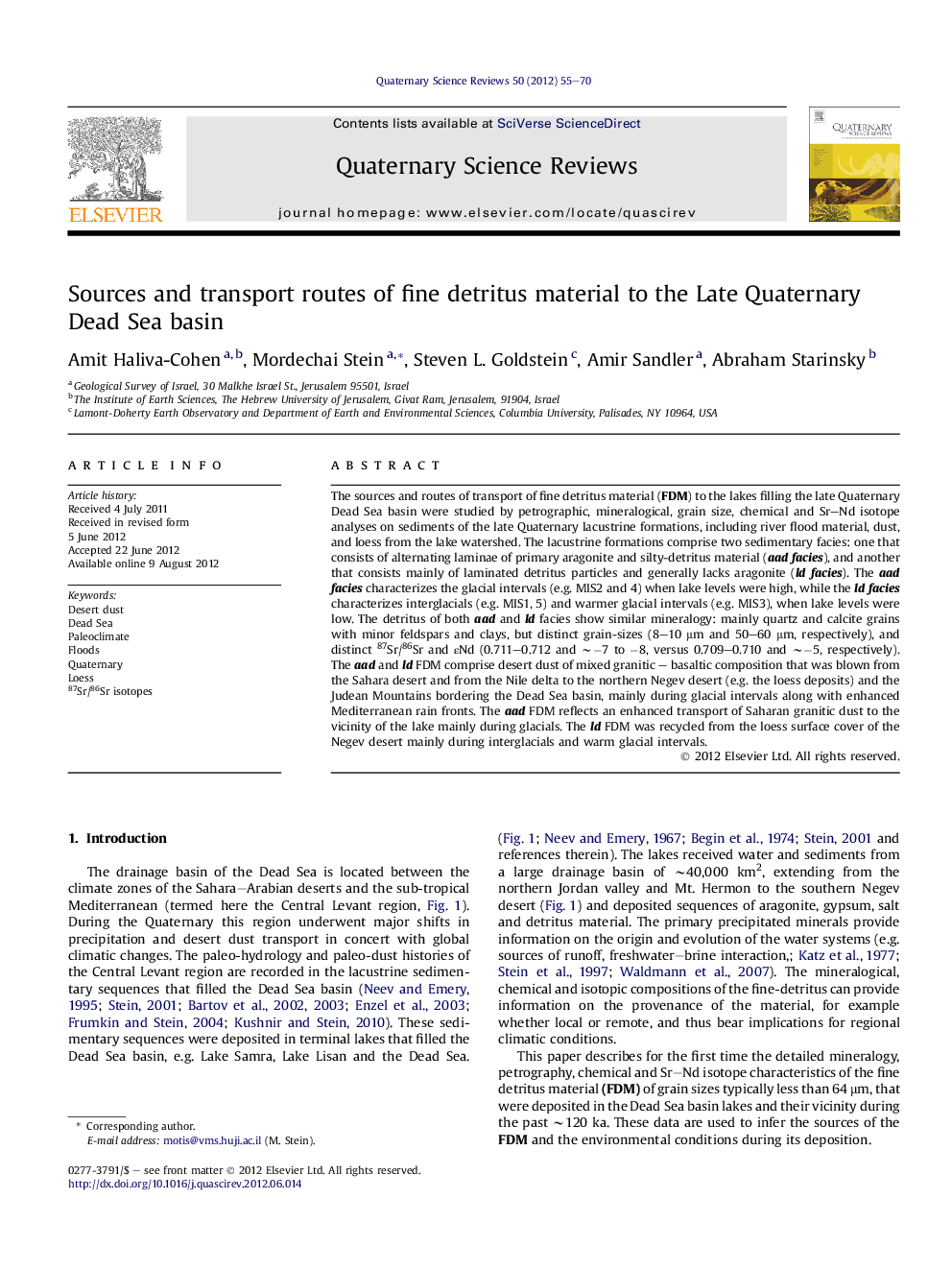| کد مقاله | کد نشریه | سال انتشار | مقاله انگلیسی | نسخه تمام متن |
|---|---|---|---|---|
| 4735725 | 1640884 | 2012 | 16 صفحه PDF | دانلود رایگان |

The sources and routes of transport of fine detritus material (FDM) to the lakes filling the late Quaternary Dead Sea basin were studied by petrographic, mineralogical, grain size, chemical and Sr–Nd isotope analyses on sediments of the late Quaternary lacustrine formations, including river flood material, dust, and loess from the lake watershed. The lacustrine formations comprise two sedimentary facies: one that consists of alternating laminae of primary aragonite and silty-detritus material (aad facies), and another that consists mainly of laminated detritus particles and generally lacks aragonite (ld facies). The aad facies characterizes the glacial intervals (e.g. MIS2 and 4) when lake levels were high, while the ld facies characterizes interglacials (e.g. MIS1, 5) and warmer glacial intervals (e.g. MIS3), when lake levels were low. The detritus of both aad and ld facies show similar mineralogy: mainly quartz and calcite grains with minor feldspars and clays, but distinct grain-sizes (8–10 μm and 50–60 μm, respectively), and distinct 87Sr/86Sr and εNd (0.711–0.712 and ∼−7 to −8, versus 0.709–0.710 and ∼−5, respectively). The aad and ld FDM comprise desert dust of mixed granitic – basaltic composition that was blown from the Sahara desert and from the Nile delta to the northern Negev desert (e.g. the loess deposits) and the Judean Mountains bordering the Dead Sea basin, mainly during glacial intervals along with enhanced Mediterranean rain fronts. The aad FDM reflects an enhanced transport of Saharan granitic dust to the vicinity of the lake mainly during glacials. The ld FDM was recycled from the loess surface cover of the Negev desert mainly during interglacials and warm glacial intervals.
► Terminal lakes in the Dead Sea Basin comprise archives of Quaternary desert dust in the Levant.
► Sr and Nd isotopes are faithful monitors of dust sources in the Sahel–Sahara deserts.
► North-Sahara granites were the prime source of dust that reached the Levant during glacials.
► Sahelian basalts contributed to the interglacial fine detritus and Negev-loess material.
Journal: Quaternary Science Reviews - Volume 50, 12 September 2012, Pages 55–70